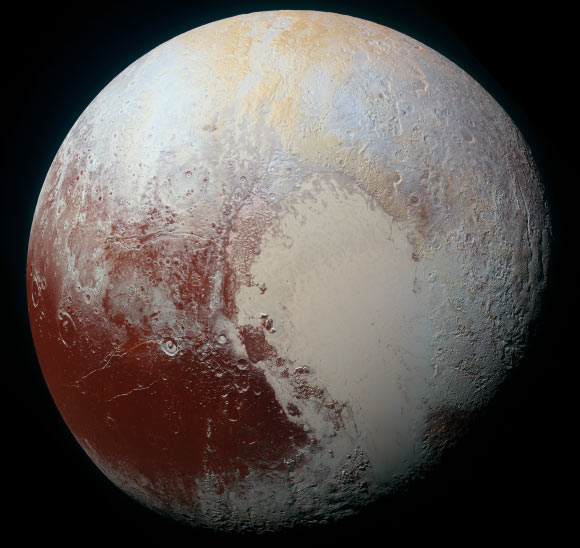The dwarf planet Pluto is known for its big heart — a structure of nitrogen ice on its surface called Tombaugh Regio which is shaped like a heart. With a left lobe consisting of a 620 mile-wide ice sheet and a right lobe consisting of nitrogen glaciers, Tombaugh Regio holds most of the planet’s nitrogen ice. But this heart isn’t static, as a new study has suggested this structure is central to the planet’s atmospheric circulation.

Most of Pluto’s thin atmosphere is composed of nitrogen gas, but there is also frozen nitrogen on the surface. When this frozen nitrogen is hit by the sun’s rays, some of it turns into vapor and rises into the atmosphere. At night, it cools and condenses back into ice. The rising and falling of the nitrogen acts as a heartbeat for the atmosphere, circulating gases in the opposite direction to the planet’s spin.
“This highlights the fact that Pluto’s atmosphere and winds — even if the density of the atmosphere is very low — can impact the surface,” lead author Tanguy Bertrand, an astrophysicist and planetary scientist at NASA’s Ames Research Center in California, explained in a statement. “Before New Horizons, everyone thought Pluto was going to be a netball — completely flat, almost no diversity. But it’s completely different. It has a lot of different landscapes and we are trying to understand what’s going on there.”
Using computer modeling, Bertrand and colleagues found the presence of Tombaugh Regio triggers westward winds, with a distinct current running along the western boundary of the Sputnik Planitia basin. The structures of the planet’s surface have distinct effects on its atmosphere and give rise to atmospheric movements that are unique in the solar system. “Sputnik Planitia may be as important for Pluto’s climate as the ocean is for Earth’s climate,” Bertrand explained. “If you remove Sputnik Planitia — if you remove the heart of Pluto — you won’t have the same circulation.”
“Pluto has some mystery for everybody,” Bertrand said.
The findings are published in the Journal of Geophysical Research.
Editors' Recommendations
- Here’s why a NASA astronaut is planting the U.S. flag underwater
- Why is Saturn’s atmosphere so warm? Cassini data could explain
- Mars has auroras of its own, which could explain why the planet lost its water
- NASA is considering whether to send an orbiter to Pluto
- Tiny dwarf planet discovered in our solar system is one-fifth the size of Pluto




